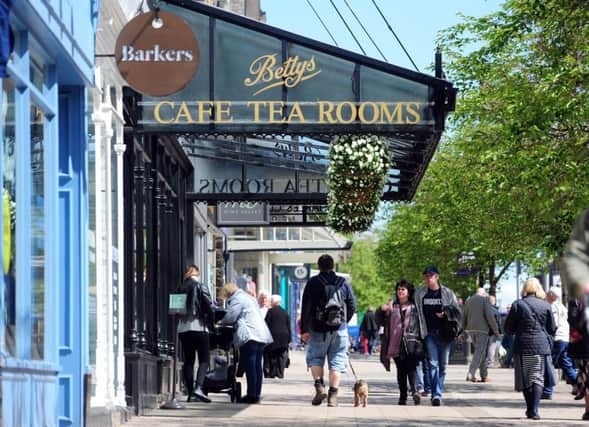David Behrens: The '˜least liveable' city of Bradford could learn from the Nimbys it dismisses


Nor was it a surprise, at least to me, to find Bradford at the opposite end of the scale on the first Northern Powerhouse Liveability Index, which compares housing, opportunities and the general desirability of 72 council areas across the North.
But it was between the lines of the statistics where the interest chiefly lay. Bradford and Craven are right next to each other; the border runs just to the north of Ilkley – and Ilkley is one of the most desirable towns not only in the region but in England.
Advertisement
Hide AdAdvertisement
Hide AdOne would have thought that its presence within the Bradford district, an anomaly of the 1972 local government reorganisation, would have lifted its mean average off the bottom of the table – in the same way that Hebden Bridge and its surroundings have helped make Calderdale a “very liveable” area.
But it was not enough to nudge the needle, and the fact that Bradford is now the only part of Yorkshire in the Least Liveable category speaks volumes about the state of the rest of it. One of its MPs, Judith Cummins, said the study did not reflect the Bradford she knew – though she did not say which Bradford this was. I’m guessing it must be the riverside town of Bradford-on-Avon in west Wiltshire, because “least liveable” exactly sums up the one I know in Yorkshire.
It is unusual for a single district to accommodate such extremes. The rest of West, North and East Yorkshire, except Kirklees, sits comfortably in the Liveable and Very Liveable categories, and Kirklees has a higher rating than Bradford. So what sets this cradle of the industrial revolution apart? Could it be the people who live there and their inclination or otherwise to take any responsibility for their environment?
It would take an ostrich to argue otherwise, yet speaking up for one’s community, in the face of quota-filling and box-ticking by people in the Town Hall, has got a bad press in recent years. So-called Nimbyism – the opposition to development or change in one’s figurative back yard – has become a byword for obstructiveness and selfishness, and a convenient target for politicians both locally and nationally.
Advertisement
Hide AdAdvertisement
Hide AdSajid Javid, the new Home Secretary no less, invoked the term earlier this year when he threatened to strip councils of their planning powers if they failed to build enough homes.
Yet a Nimby by any other name is nothing more than someone who knows the immediate area better than the planning officials and who is prepared to speak up when ill-formed plans threaten to irrevocably change its character.
Is that really socially irresponsible? Would Ilkley have retained its particular charm had its occupants sat back and allowed it to have become a mere overspill area for Bradford? Would it have made such attractive TV viewing when the Tour de Yorkshire wound its way up Cowpasture Road to the Moor yesterday? It’s a pertinent question because the liveability survey was commissioned in part to inform the debate on where new housing should go.
If the planners get their way, a good deal of Bradford’s will go in the village of Burley-in-Wharfedale, next to Ilkley, where property prices are similarly high and the incentive for private builders greater than elsewhere in the district. The 400 homes proposed there would increase the population by something like a quarter, with no improvement to the already stretched infrastructure. Are the locals there really so wrong to oppose it?
Advertisement
Hide AdAdvertisement
Hide AdAnd isn’t Bradford compromising its standing even further by seeking to dilute the desirability of its best areas and doing too little to bring up the profile of the rest of its patch, where affordable housing is really needed?
Demonising Nimbys for daring to care about their communities is bananas – which, by the way, is also an acronym used pejoratively by planners against the rest of us, in this case those whom they think want to “build absolutely nothing anywhere near anything”.
Seeking out scapegoats is easy, but councils would do well to remember, as those in North and East Yorkshire seem better at doing, that liveability is derived first and foremost from the people who still want to live there.